 Flight navigation and engine instrumentation systems were until a few years ago, two completely independent units. In the recent years however, while still retaining their core independence, these two units have merged in that the flight navigation now accepts direct data feed from the engine instrument system. It also accepts feed from compatible GPS system. Flight navigation and engine instrumentation systems were until a few years ago, two completely independent units. In the recent years however, while still retaining their core independence, these two units have merged in that the flight navigation now accepts direct data feed from the engine instrument system. It also accepts feed from compatible GPS system.
For the uninitiated, flight navigation essentially consists of three components – visual, radio and GPS. Visual flight navigation usually takes place when the plane is approaching its destination and the pilot(s) look out of their window for visual indicators that confirm they are in the right place. These visual indicators could be
...
Read more »
Category:
Technology
|
Views:
151
|
Added by:
JPI
|
Date:
11.20.2015
|
|
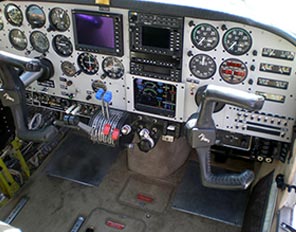 People who rely on instruments to reach their destination and to keep them safe while travelling tend to have one thing in common – the need for advanced and accurate engine monitoring systems. People who rely on instruments to reach their destination and to keep them safe while travelling tend to have one thing in common – the need for advanced and accurate engine monitoring systems.
Talk to a pilot, an astronaut, a ship’s captain or a cross-country race driver and they all agree that after reliable engines, the next most important thing to have is accurate engine monitoring systems. People have been flying aircraft ever since the Wright brothers took off and when they were in the air, they needed to know (and still do), whether the engine is performing well and their current position and heading relative to their destination. This called for accurate aircraft engine monitoring systems as well as accurate navigation.
If you were to buy a new aeroplane tod
...
Read more »
Category:
Technology
|
Views:
149
|
Added by:
JPI
|
Date:
11.04.2015
|
|
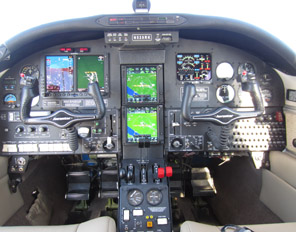 When the Wright brothers took off way back in 1903, even they realised that for a successful and safe flight, the pilot(s) would need an insight into wind direction, wind speed, aircraft altitude, and current location and so on. When the Wright brothers took off way back in 1903, even they realised that for a successful and safe flight, the pilot(s) would need an insight into wind direction, wind speed, aircraft altitude, and current location and so on.
As aircraft development progressed and the inevitable crashes occurred, aircraft inventors realized that aircraft engine status and information about every aspect of the aircraft engine was just as vital as information relating to wind direction, speed, aircraft altitude, and current location. Thus was born the aircraft flight engine instruments.
Aircraft flight engine instruments consisted of a bunch of dials that provided such varied information as oil pressure and temperature, cylinder head temperature (CHT), engine tachometer, propeller tachome
...
Read more »
Category:
Technology
|
Views:
165
|
Added by:
JPI
|
Date:
10.08.2015
|
|
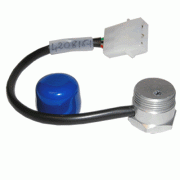 Until just a few years ago, aircraft had three distinct sets of instrument – aircraft flight instrument, aircraft engine instruments and aircraft navigation instruments. Moreover, each of these occupied enormous space in the cockpit instrument panel. Today, the distinctions are somewhat blurred. Until just a few years ago, aircraft had three distinct sets of instrument – aircraft flight instrument, aircraft engine instruments and aircraft navigation instruments. Moreover, each of these occupied enormous space in the cockpit instrument panel. Today, the distinctions are somewhat blurred.
Image sitting in the cockpit trying to digest and make sense of three sets of information all at the same time and if that didn’t spike your blood pressure; the weather Gods usually did their magic to have a little fun at your expense.
Born out of the necessity of reducing the numerous dials in the aircraft cockpit and also cutting down on the strain, modern day inventors (such as J.P. Instruments) of aircraft flight and digital instruments systems; used space-age technology to c
...
Read more »
Category:
Technology
|
Views:
179
|
Added by:
JPI
|
Date:
09.23.2015
|
|
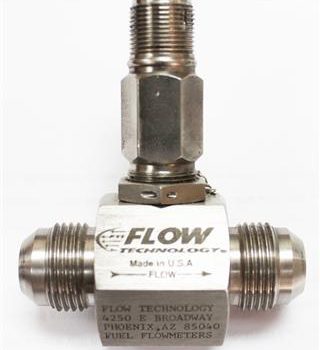 At some point in time or the other, we all have watched WWII movies with planes flying high and pilots frantically tapping the fuel gage or some other instrument to make sure the indicator needle is not stuck and the display is working as intended. At some point in time or the other, we all have watched WWII movies with planes flying high and pilots frantically tapping the fuel gage or some other instrument to make sure the indicator needle is not stuck and the display is working as intended.
Cut to 2015 and scene has changed. Today, not only do aeroplanes have modern high speed electrical and digital instruments to display a hundred different engine matrices and keep track of everything from cabin pressure to fuel pressure; they have built-in failure detection circuits that in turn keep track of the instruments themselves. No more tapping the dials to make sure they are display the correct information.
A modern aircraft has numerous high-speed electrical instruments for maintaining the aircraft on cours
...
Read more »
Category:
Technology
|
Views:
169
|
Added by:
JPI
|
Date:
09.10.2015
|
|
 Ask any pilot and they will tell you that a twin engine is better than a single engine. Generally, and especially in the aircraft industry this rule holds true provided of course, the pilot knows how to take advantage of a twin engine. Ask any pilot and they will tell you that a twin engine is better than a single engine. Generally, and especially in the aircraft industry this rule holds true provided of course, the pilot knows how to take advantage of a twin engine.
Without a shred of doubt, the second engine provides the pilot and passengers a degree of safety through redundancy. However, that safety might evaporate in a flash if the pilot is unable to leverage characteristics or advantages of a twin engine via the aircraft monitoring system.
...
Read more »
Category:
Technology
|
Views:
198
|
Added by:
JPI
|
Date:
08.31.2015
|
|
 Ask any pilot and they will tell you that a twin engine is better than a single engine. Generally, and especially in the aircraft industry this rule holds true provided of course, the pilot knows how to take advantage of a twin engine. Ask any pilot and they will tell you that a twin engine is better than a single engine. Generally, and especially in the aircraft industry this rule holds true provided of course, the pilot knows how to take advantage of a twin engine.
Without a shred of doubt, the second engine provides the pilot and passengers a degree of safety through redundancy. However, that safety might evaporate in a flash if the pilot is unable to leverage characteristics or advantages of a twin engine via the aircraft monitoring system.
...
Read more »
Category:
Technology
|
Views:
167
|
Added by:
JPI
|
Date:
08.31.2015
|
|
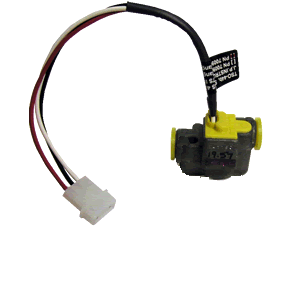 If only the Wright Brothers had the same flight instruments that are available to today’s pilots, development of powered flight would perhaps have been a whole lot faster. If only the Wright Brothers had the same flight instruments that are available to today’s pilots, development of powered flight would perhaps have been a whole lot faster.
Back then the Wright Brothers had to make do with a tachometer, a wind meter and a stop watch. Pretty amazing when you consider that today pilots have information on the aircraft’s altitude, the condition of the aircraft, components, engine, weather, current position, navigation, cabin environment, communication and a couple of dozen other things.
In fact pilots of today are almost spoilt by the sheer choices they have. Technology has advanced so fast in the last decade that the humble cockpit with its numerous analog glass dials has given way to spacecraft-like touch screen digital flight mo
...
Read more »
Category:
Technology
|
Views:
144
|
Added by:
JPI
|
Date:
08.18.2015
|
|
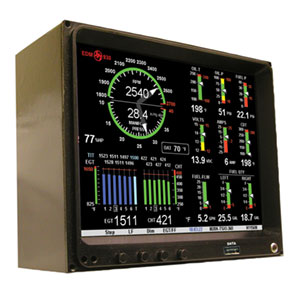 An aircraft engine monitoring system works along the same lines as a say an athlete hooked up to monitoring systems as he exercises in a gym. If any monitor indicates that a vital sign is above normal, the medical expert will decide on the necessary course of action. An aircraft engine monitoring system works along the same lines as a say an athlete hooked up to monitoring systems as he exercises in a gym. If any monitor indicates that a vital sign is above normal, the medical expert will decide on the necessary course of action.
In an aircraft it is the pilot(s) who will decide on what action to take when any monitor displays an abnormal reading. So where do these readings come from? Modern day aircraft have several sensors installed at vital places in the aircraft’s engine. For example, there are sensors monitoring engine temperature, oil pressure, and fuel pressure and so on. Each of these sensors are in turn are hooked up to either individual or a single digital monitor installed in the cockpit and capable of displaying information from single o
...
Read more »
Category:
Technology
|
Views:
145
|
Added by:
JPI
|
Date:
08.05.2015
|
|
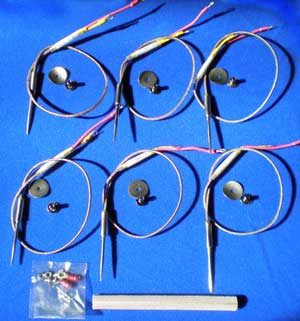 An analog EGT (Exhaust Gas Temperature) probe is essentially a temperature detector that that works without electricity because it relies on thermocouplers. An analog EGT (Exhaust Gas Temperature) probe is essentially a temperature detector that that works without electricity because it relies on thermocouplers.
A Thermocoupler consists of two wire legs made from different metals. These legs are welded at one end to create a junction and this is where the temperature is measured. If heat is applied to the junction, the metal expands generating a tiny electrical pulse called ‘Seebeck voltage’. The voltage being generated is directly correlated to the heat being applied and the type of metals being used in the thermocoupler. Conversely, if we know the volts being generated, we can figure out the temperature.
Of course, one does not need to sit with a calculator or for that matter, do any calculation to figure out the temperature in the airc
...
Read more »
Category:
Technology
|
Views:
123
|
Added by:
JPI
|
Date:
07.17.2015
|
| « 1 2 ... 12 13 14 15 16 » |


 People who rely on instruments to reach their destination and to keep them safe while travelling tend to have one thing in common – the need for advanced and accurate engine monitoring systems.
People who rely on instruments to reach their destination and to keep them safe while travelling tend to have one thing in common – the need for advanced and accurate engine monitoring systems. When the Wright brothers took off way back in 1903, even they realised that for a successful and safe flight, the pilot(s) would need an insight into wind direction, wind speed, aircraft altitude, and current location and so on.
When the Wright brothers took off way back in 1903, even they realised that for a successful and safe flight, the pilot(s) would need an insight into wind direction, wind speed, aircraft altitude, and current location and so on. Until just a few years ago, aircraft had three distinct sets of instrument – aircraft flight instrument, aircraft engine instruments and aircraft navigation instruments. Moreover, each of these occupied enormous space in the cockpit instrument panel. Today, the distinctions are somewhat blurred.
Until just a few years ago, aircraft had three distinct sets of instrument – aircraft flight instrument, aircraft engine instruments and aircraft navigation instruments. Moreover, each of these occupied enormous space in the cockpit instrument panel. Today, the distinctions are somewhat blurred. At some point in time or the other, we all have watched WWII movies with planes flying high and pilots frantically tapping the fuel gage or some other instrument to make sure the indicator needle is not stuck and the display is working as intended.
At some point in time or the other, we all have watched WWII movies with planes flying high and pilots frantically tapping the fuel gage or some other instrument to make sure the indicator needle is not stuck and the display is working as intended. Ask any pilot and they will tell you that a twin engine is better than a single engine. Generally, and especially in the aircraft industry this rule holds true provided of course, the pilot knows how to take advantage of a twin engine.
Ask any pilot and they will tell you that a twin engine is better than a single engine. Generally, and especially in the aircraft industry this rule holds true provided of course, the pilot knows how to take advantage of a twin engine. If only the Wright Brothers had the same flight instruments that are available to today’s pilots, development of powered flight would perhaps have been a whole lot faster.
If only the Wright Brothers had the same flight instruments that are available to today’s pilots, development of powered flight would perhaps have been a whole lot faster. An aircraft engine monitoring system works along the same lines as a say an athlete hooked up to monitoring systems as he exercises in a gym. If any monitor indicates that a vital sign is above normal, the medical expert will decide on the necessary course of action.
An aircraft engine monitoring system works along the same lines as a say an athlete hooked up to monitoring systems as he exercises in a gym. If any monitor indicates that a vital sign is above normal, the medical expert will decide on the necessary course of action. An analog EGT (Exhaust Gas Temperature) probe is essentially a temperature detector that that works without electricity because it relies on thermocouplers.
An analog EGT (Exhaust Gas Temperature) probe is essentially a temperature detector that that works without electricity because it relies on thermocouplers.